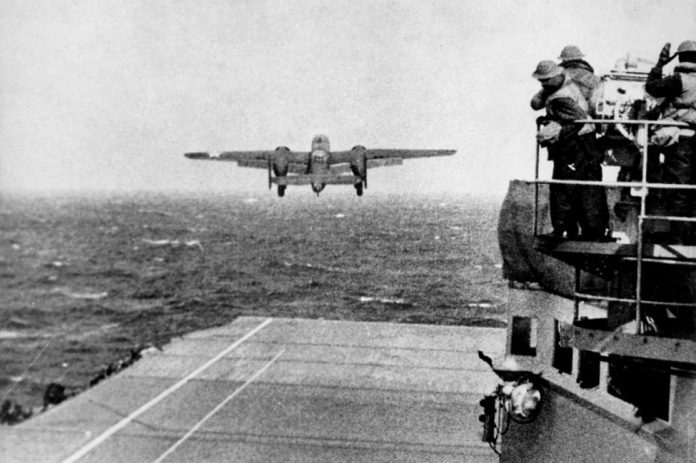
The Petrel discovered the vessel in late January about 17,500 feet below the ocean’s surface, Allen’s website announced Tuesday. The Hornet was last seen Oct. 27, 1942, when it was sunk by torpedoes during a World War II battle with Japanese forces near the Santa Cruz Islands.
One-hundred-forty men died in the attack and subsequent sinking, and since then, mystery has surrounded the final resting place of the Hornet.
The research team said it was able to pinpoint the Hornet’s location by piecing together data from national archives that included deck logs and reports from other ships involved in the naval battle. They plotted the positions of nine other warships for a starting point in their search.
Allen’s website said the team discovered the Hornet on the very first dive of the Petrel’s autonomous underwater vehicle.
“We had the Hornet on our list of WWII warships that we wanted to locate because of its place in history as a capitol carrier that saw many pivotal moments in naval battles,” said Robert Kraft, director of subsea operations for Vulcan, which was involved in the hunt. “Paul Allen was particularly interested in aircraft carriers so this was a discovery that honors his memory.”
Richard Nowatzki, now 95, was 18 years old when he served as a gunner on the Hornet during its final battle. He told CBS News he was “very fortunate” to have survived.
“The actual fact that you can find these ships is mind boggling to me … I want to thank you for honoring me this way,” he said.
“When they left, we were dead in the water,” Nowatzki said of the battle. “They used armor piercing bombs, now when they come down, you hear ’em going through the decks … plink, plink, plink, plink … and then when they explode the whole ship shakes.”
Allen, who had a keen interest in solving such deep-sea mysteries, died Oct. 15 of complications of non-Hodgkin lymphoma, a rare blood cancer. He had been in remission from the disease for most of the past decade.
The Petrel has discovered a number of sunken World War II vessels, including the USS Lexington, an aircraft carrier sunk during a May 1942 battle. The researchers also found the USS Indianapolis cruiser, which sank in July 1945, taking some 800 sailors down with it.






